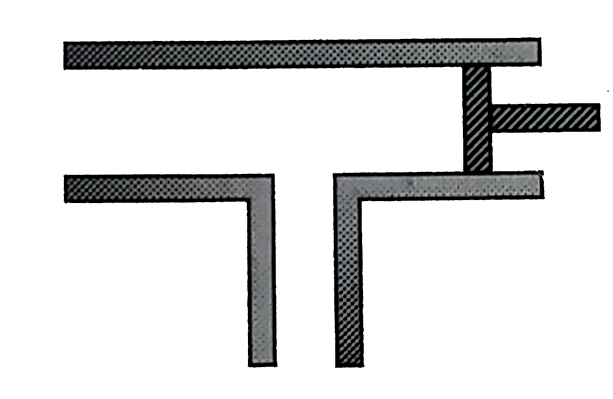In an experiment related to interference , Quinck's tube was employed to determine the speed of sound in air. A tunning fork of frequency was used as the sounding source . Initially , the apparatus , yielded a maximum sound intensity . Later , when the slidable tube was drawn by a distance of , the intensity was found to be maximum for the first time . Determine the speed of sound in air .
To determine the speed of sound in air using the given data from the experiment with Quincke's tube, we can follow these steps:
Step 1: Understand the Setup
In the experiment, a tuning fork of frequency f=1328Hz is used to produce sound waves. The Quincke's tube is adjusted to create conditions for constructive interference.
Step 2: Determine the Path Difference
When the tube is drawn out by a distance of 12.5cm, the path difference between the two sound waves becomes significant. The sound waves traveling through the two paths will have a path difference of:
Δx=2×12.5cm=25cm
Step 3: Convert Path Difference to Meters
To work in standard SI units, convert the path difference from centimeters to meters:
Δx=25cm=25×10−2m=0.25m
Step 4: Relate Path Difference to Wavelength
For constructive interference (maximum intensity), the path difference must be an integral multiple of the wavelength λ. Since this is the first maximum (n=1), we have:
Δx=λ
Thus, we find:
λ=0.25m
Step 5: Use the Speed of Sound Formula
The speed of sound v can be calculated using the formula:
v=fλ
Substituting the known values:
v=1328Hz×0.25m
Step 6: Calculate the Speed of Sound
Now, perform the multiplication:
v=1328×0.25=332m/s
Conclusion
The speed of sound in air is:
332m/s
---
In the experiment, a tuning fork of frequency f=1328Hz is used to produce sound waves. The Quincke's tube is adjusted to create conditions for constructive interference.
When the tube is drawn out by a distance of 12.5cm, the path difference between the two sound waves becomes significant. The sound waves traveling through the two paths will have a path difference of:
Δx=2×12.5cm=25cm
To work in standard SI units, convert the path difference from centimeters to meters:
Δx=25cm=25×10−2m=0.25m
For constructive interference (maximum intensity), the path difference must be an integral multiple of the wavelength λ. Since this is the first maximum (n=1), we have:
Δx=λ
Thus, we find:
λ=0.25m
The speed of sound v can be calculated using the formula:
v=fλ
Substituting the known values:
v=1328Hz×0.25m
Now, perform the multiplication:
v=1328×0.25=332m/s
The speed of sound in air is:
332m/s
Similar Questions
Knowledge Check
- Question 1 - Select One
Vibrating tuning fork of frequency n is placed near the open end of a long cylindrical tube. The tube has a side opening and is fitted with a movable reflecting piston. As the piston is moved through 8.75cm, the intensity of sound changes from a maximum to minimum. If the speed of sound is 350m/s. Then n is
 A500 HzB1000 HzC2000 HzD4000 Hz
A500 HzB1000 HzC2000 HzD4000 Hz
In Quincke's experiment the sound detected is changed from a maximum to a minimum when the sliding tube is moved through a distance of 2.50 cm. Find the frequency of sound if the speed of sound in air is 340ms−1.
View SolutionIn a Quinck's experiment , the sound intensity being detected at an appropriate point , changes from minimum for the second time , when the slidable tube is drawn apart by 9.0cm. If the speed of sound in air be 336m/s, then what is the frequency of this sounding source ?
View SolutionHow far does sound travel in air when a tuning fork of frequency 480 Hz completes 50 vibrations. Velocity of sound is 348 ms−1.
View SolutionIn a resonance tube experiment , the first resonance is obtained for 10cm of air column and the sound for 32cm. The end correction for this apparatus is
View SolutionThe frequency of a tuning fork is 150 Hz and distance travelled by the sound, produced in air is 20 cm in one vibration. Calculate the speed of sound in air.
View SolutionIf a resonance tube is sounded with a tuning fork of frequency 256 Hz, resonance occurs at 35 cm and 105 cm. The velocity of sound is about
View SolutionIn an experiment to measure the speed of sound by a resonating air column, a tuning fork of frequency 500 Hz is used. The length of the air column is varied by changing the leavel of water in the resonance tube. Two successive resonances are heard at air columns of length 50.7 cm and 83.9 cm. Which of the following statements is (are) true?
View Solution

